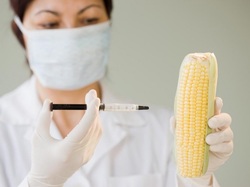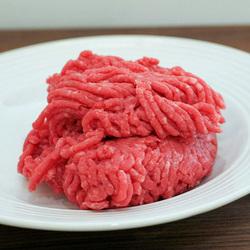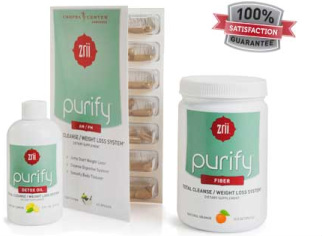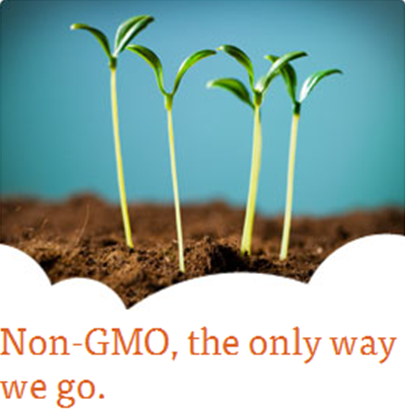
It's a very controversial and complex issue. Just think about the term "Genetically Modified" for a sec...It definitely does not sound like something I would like to eat, let alone let my kid's eat it!
Using genetic engineering techniques scientists alter organisms to give it a new DNA. This new genetically modified seed now will produce a plant that will not die even when sprayed with the potent Round Up pesticides. Not only does it encourage the use of pesticides but farmers tend to use MORE pesticides than before which is sort of a double whammy because you get the health risks of the genetically modified seed itself PLUS all the pesticides.
There is absolutely no benefits to GMO seeds, other than it being a huge money maker for Monsanto. Even half of the European Union finds no benefit to genetically modified food and in fact some countries are banning the use and sale of GM food altogether.
Which may raise the question, why is GM food good enough for the U.S.? It all boils down to politics. Monsanto is a company that dominates the American food chain. They developed a seed that would resist Monsanto's own herbicide, Roundup, allowing farmers to spray their fields with the weed killers without killing the crops. Commercialized GMO crops in the U.S. include soy (91%), cotton (88%), canola (88%), corn (85%), Hawaiian papaya (more than 50%), and some zucchini and yellow squash. Other sources of GMO are products derived from the above, including oils, soy protein, soy lecithin, cornstarch, corn syrup & high fructose corn syrup.
Other sources are meat, eggs, and dairy products from animals that have eaten GM feed (and the majority of the GM corn and soy is used for feed); dairy products from cows injected with rbGH (a GM hormone);food additives, enzymes, flavorings, and processing agents, including the sweetener aspartame (NutraSweet®) and rennet used to make hard cheeses; and honey and bee pollen that may have GM sources of pollen.
GMO foods are NOT safe. The only feeding study done with humans showed that GMOs survived inside the stomach of the people eating GMO food. No follow-up studies were done.
Various feeding studies in animals have resulted in potentially pre-cancerous cell growth, damaged immune systems, smaller brains, livers, and testicles, partial atrophy or increased density of the liver, odd shaped cell nuclei and other unexplained anomalies, false pregnancies and higher death rates. Studies have found the pesticide producing genes (BT Toxins) in the intestinal flora of mothers and unborn fetuses. Source
GM foods are not labeled, so it's a little tough to know exactly what to look for. The easiest way to avoid GM foods is to look for is the certified organic seal. If the product has this seal it cannot be GMO.
I prefer to take the guess work out of it and buy our groceries here because they pledge not to sell any products containing GMO giving me piece of mind. ANYTHING I buy from here is non-GMO which means I can feel confident knowing I'm giving my girls foods that will actually nourish their bodies not cause harm.
There is a huge push in Congress to get food companies to label GM foods but Monsanto, the maker of GM seeds, is incredibly powerful and is said to be "in bed" with Congress. For more information on GMO and how you can help get them labeled visit The Institute For Responsible Technology.















 RSS Feed
RSS Feed